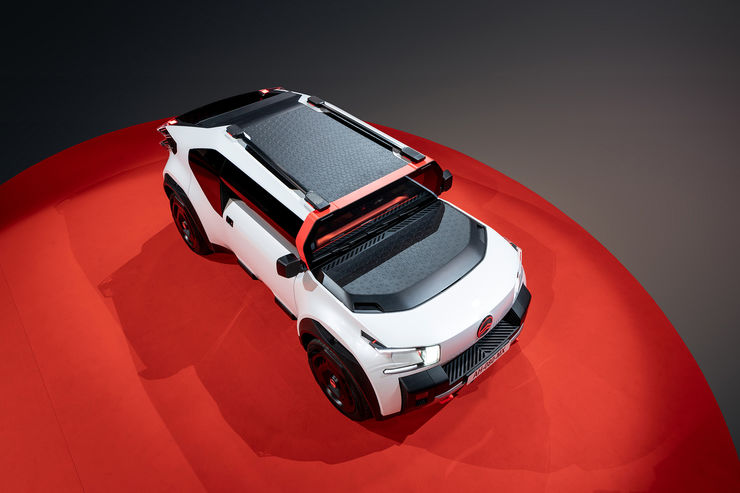With the oli concept car (all-ë), Citroën and BASF show that reduction and elimination can save weight and resources. By throttling the top speed to 110 km/h and making acceleration similar to the 2CV, the range and battery life are decisively extended. Many of the newly developed components are of single-variety design. This means they come from one and the same chemical product family. Bonded and welded components consisting of different types of material make mechanical recycling difficult. The designers at oli therefore took care during the design phase to design as many components as possible from just one material. The simplification principle was also consistently implemented in terms of production technology, with the driver and passenger doors being identical. This saves on press tools and reduces complexity. The same applies to all wheel arches and bumpers. The color of the bodywork perfectly conveys the concept of the vehicle: at first glance it appears to be pure white, but mica particles have been added to emphasize the shape of the vehicle. In contrast to the exterior, the interior materials - such as the seats and flooring - were painted with an intense orange color. Citroën worked closely with BASF on the development and design. A high-performance plastic from BASF can be found, for example, in the rear armrests and the floor of the interior: Infinergy, an expanded TPU (thermoplastic polyurethane), is also used in running shoes and sports flooring. It is elastic like rubber, but lighter and very durable and extremely abrasion-resistant. In oli, the material's job is to give armrests and flooring a comfortable yet durable surface. It also dampens sound and vibrations. An additional water-based coating (Nova-Coat-P) ensures a particularly long service life by optimally protecting the soft surfaces against abrasion, UV radiation, dirt and chemicals. Weight has also been saved considerably on the vehicle's exterior - with greater stability and durability. The hood, roof and trunk consist of panels in which the Elastoflex polyurethane system has been combined with the Elastocoat spray paint system. Thanks to a honeycomb-like sandwich structure, the panels are so stable that it is even possible to stand on them. A water-based paint (R-M Agilis) with a very low content of volatile organic compounds (VOCs) is used for the bodywork. The Catho Guard 800 cathodic dip coating, which protects the battery housing from corrosion, contributes to further resource savings. It is characterized by its high performance and environmental friendliness, as it is tin/HAP-free and low in solvents.
Autor(en): wi




